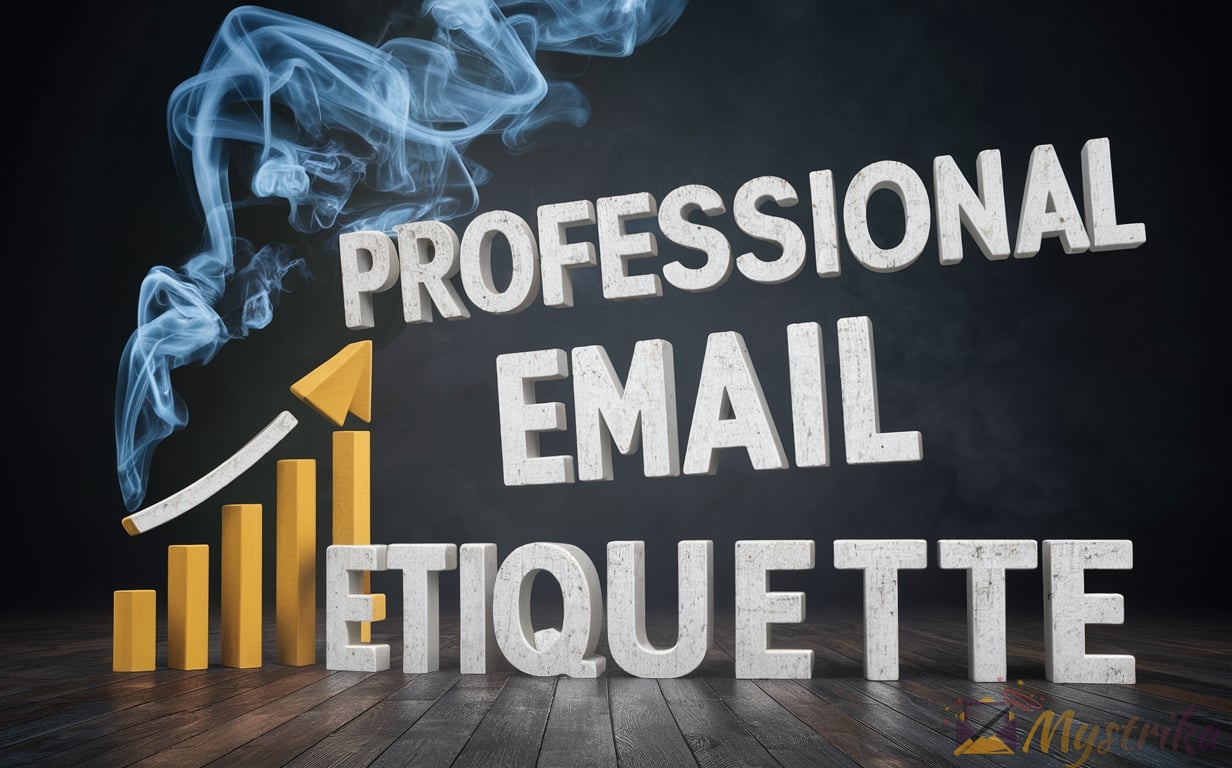Sending emails with polished, nuisance-free etiquette takes some finesse. But it pays dividends by earning you respect, responses, and positive outcomes. This comprehensive guide shares insider tips on crafting emails that make the right impression.
Crafting a Clear, Actionable Subject Line
The subject line is the first thing your recipient sees when an email hits their inbox. Like the headline of a news article, it needs to grab their attention and make them want to open it.
But crafting a stellar email subject line is an art and a science. You need to balance being clear, descriptive, and concise while using keywords and creating curiosity. Get it right, and your important emails will get opened, read, and acted on. Mess it up, and you may never get the response you need.
So how do you master the art of irresistible email subject lines? Here are some proven tips:
Use Relevant Keywords For Email Topic
Including keywords related to the email topic helps get your message past spam filters and allows recipients to instantly grasp what it’s about when scanning their inbox.
For example, if emailing a client a contract revision, go with “Contract Revision for [Client Name]” instead of vague “Follow-up”.
Watch out for overusing the same keywords repeatedly, as that looks spammy. But do incorporate 1-2 highly relevant terms.
Keep It Short Yet Descriptive
Ideally, you want to keep email subject lines under 50 characters so they don’t get cut off on mobile. But you also need to provide enough context.
So “Dinner tonight?” is too short, while “An in-depth analysis of the ideal dinner location convening factors we should consider for our upcoming meal this very evening” is too long.
Shoot for 6-10 words that summarize the purpose or content of your email.
Speak To Your Audience
Tailor the terminology in your subject line to your recipient. “Attached is the TPS report” may resonate with your officemates. But to an external client, “Your Monthly Analytics Report is Here” is clearer.
Avoid Being Too Vague or Generic
“Follow-up” and “Checking In” don’t provide enough context. The recipient won’t know if it’s urgent or just an FYI.
Give more details like “Following Up re: August Invoice” or “Checking In on Project Status.”
Use Numbers To Convey Importance
Starting a subject line with a number or percentage grabs attention because our brains are wired to spot numerical patterns.
For instance, “Your Q3 Sales Results are in – 21% Growth for Acme Corp!” indicates an important metric at a glance.
Ask a Question To Create Curiosity
Drawing the reader in with a how, what, when, where or why question gives them an incentive to open the email.
Such as “How can we improve our social media strategy? Key findings inside…”
Just don’t use this tactic excessively, or recipients will become desensitized.
Personalize When Possible
Including the recipient’s name makes a subject line feel custom-crafted rather than generic:
“Sarah, Thought you’d want to see this update on Project X”
But avoid terms like {First Name} that look obviously auto-generated.
Use Urgency and Deadlines To Prompt Action
If you need an urgent reply, state it upfront: “Must confirm by 5PM today…”
You can also set expectations to hear back by a certain date.
Just don’t make every email SEEM urgent if it’s not time-critical. Or recipients won’t take you seriously.
Avoid Spam Trigger Words
Some words almost guarantee your email gets sent to the spam folder. Avoiding all caps, repetition of letters (Freeeee), and spammy terms like “Act Now!” and “Earn money fast”.
Also, too many exclamation marks come across as over-eager or desperate!
Test Different Versions
The ideal email subject line can be a moving target even for the same recipient.
Try A/B testing a few variations with a small test group before mass-emailing. Track open and response rates to refine your approach.
Review Subject Line After Drafting Email
Sometimes you don’t know the true essence of an email until after writing it.
Before sending your email, skim it over and ensure your original subject line still accurately reflects the content. Tweak it if needed.
Crafting amazing subject lines is challenging but critically important. Take the time to get it right, and you’ll get more opens, responses, and positive outcomes from your professional emails.
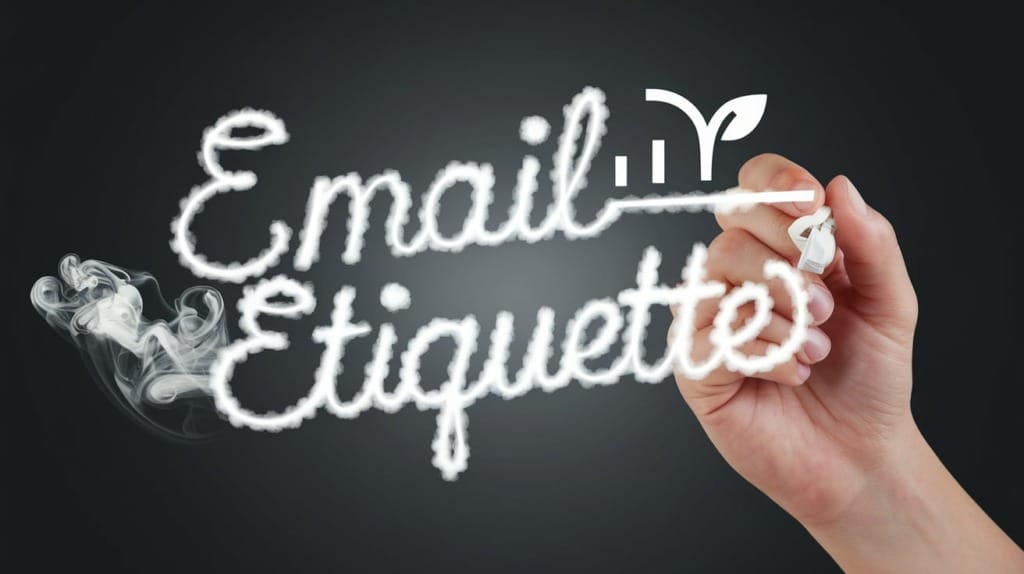
Open with a Warm but Professional Greeting
Kicking off an email with an appropriate greeting sets the tone for the rest of your message. But when writing professionally, striking that delicate balance between warm and polite can be tricky.
Should you use a formal “Dear Mr./Ms. Last Name”? First names? Or a friendly but generic “Hi there!”?
Context matters. Here are some tips on selecting the right email greeting for different situations:
Use “Dear” For Formal Correspondence
“Dear Mr. Smith” or “Dear Ms. Williams” are safe choices when emailing senior executives, important clients, government officials, and other VIPs who expect formality.
Stick to last names unless you are expressly invited to use their first name. This projects professionalism and respect.
Also go with “Dear” when emailing large groups of mixed contacts where you don’t know everyone well.
First Names For Colleagues And Close Contacts
Once you have an established work relationship, switching to first names cultivates closeness and collaboration.
“Hi John” feels friendlier than “Dear Mr. Smith” when emailing within your department or company.
Just be sure you do in fact know the person’s name. Don’t assume, or it may come off as rude.
Also, always match the formality of how they address you in return.
Stay Generic With External Contacts
When emailing new or less familiar contacts, “Hi there” or “Hello [first name]” is warm while still professional.
You are acknowledging them personally without assuming unwanted familiarity.
Be Culturally Sensitive
Some cultures place greater emphasis on titles and surnames than others when it comes to professional correspondence.
Do some quick research on the naming traditions in the recipient’s country before emailing internationally.
Set Defaults For Less Critical Email
For casual internal emails or mass emails, default to whatever greeting feels most natural for your organizational culture.
“Hi all” or “Hello team” is friendly yet professional for group emails.
Consider Relationship And Objective
Match the greeting to the purpose and tone of the email.
A formal “Dear” projects seriousness for requests or important business matters requiring prompt response, while “Hi [first name]” feels more casual for quick social correspondence.
Keep It Consistent
Once you have established a greeting norm with an individual or group, stick to it for consistency.
Suddenly switching from “Hi Susan” to “Dear Ms. Smith” feels awkward, unless there is an intentional reason for greater formality.
Change As Relationships Evolve
It’s fine to gradually progress from “Dear Mr. Jones” to “Hi Chris” as you get to know someone better through ongoing correspondence.
Just don’t rush it or force unwanted familiarity. Let regular professional communication dictate the shift naturally over time.
When In Doubt, Err On Formal
Unsure what level of formality to use? It’s safer to err on the side of being too formal rather than too casual.
“Dear Mr. Liu” may feel stiffer than necessary to a close colleague you normally call “Rob.”
But it won’t damage the relationship. Whereas incorrectly using an overly familiar “Hi Rob!” with a new external contact you’ve never met may inadvertently offend.
Selecting the perfect greeting helps set the right tone upfront. With cultural awareness and proper formality, your emails will feel polished, respectful and professional.

Get Right to the Point in Your Email Body
Now that you’ve crafted a compelling subject line and greeting, it’s time to write the meat of your email – the body content. This is your chance to provide essential information to the recipient and make clear requests or calls to action.
While you may be tempted to be overly wordy and formal, the most effective email bodies get right to the point. Here’s how:
Keep Sentences Short And Direct
Your recipients are busy and may be skimming on mobile devices. Craft focused 10-15 word sentences that communicate key details rapidly.
Replace winding, indirect phrasing like:
“After careful evaluation of the aforementioned issues at hand pertaining to budget resource allocation, my professional recommendation would be to consider implementation of Solution A.”
With punchy, explicit wording such as:
“I recommend we implement Solution A due to budget constraints.”
Limit Paragraph Length
Paragraphs with more than 3-4 sentences risk losing the reader’s focus. Break up your content into bitesize chunks.
Consider using the microcontent approach of one idea per paragraph.
This allows readers to quickly grasp each point before moving to the next.
Use Lists and Headers To Organize
Unbroken blocks of text are difficult to digest. Make your key information pop through formatting.
Use numbered lists for step-by-step instructions, bulleted lists for recommendations, and descriptive headers to introduce new subtopics.
Formatting boosts skimmability for busy readers.
Include Only Relevant Information
Don’t burden your email with extraneous details the recipient doesn’t need.
Stick to facts, context and reasoning directly tied to your purpose and request.
Be concise yet compelling in conveying why they should care.
Clearly Summarize Next Steps or Desired Outcome
Don’t leave the recipient guessing what you want by dancing around the point.
Directly ask for what you need or outline what should happen next at the end of your email.
For example: “To move forward on Project X, I need approval on the budget by Wednesday.”
Set Deadlines For Urgent Requests
If you need a response or decision ASAP, specify when exactly, right upfront in the body.
“Please advise by end of day Thursday whether you approve this new workflow for immediate implementation.”
This prompts timely action, rather than delays from a vague “looking forward to your feedback” closure.
Use Visual Aides To Support Complex Concepts
Some ideas are best communicated through images, charts and diagrams.
Leverage attachments, embedded images or links to multimedia to illustrate solutions for maximum impact.
Choose Readability Over Formality
Resist the temptation to use complex vocabulary and winding, passive sentence structures in an attempt to sound overly formal.
The resulting communication will be unclear and require multiple reads. Prioritize simple, explicit phrasing to get your point across efficiently.
When you craft a tight, scannable email body that only includes essentials, clearly states goals, and facilitates response, you transform your message from an obligation into a value-add. Recipients will eagerly read, understand, and act on your emails.
Proofread Before You Click Send
You’ve written what seems like the perfect email: The subject line grabs attention, the greeting sets a professional yet friendly tone, and the body content clearly conveys your message.
Before eagerly hitting send and calling it done, take a moment to proofread. This final but critical step can catch embarrassing mistakes that undermine your polished image.
Here’s how to effectively self-edit your emails before sending:
Double Check for Typos and Grammar Errors
Read each sentence slowly and carefully to spot spelling, grammar, or punctuation errors. Our brains often auto-correct mistakes in our own writing.
Having a fresh perspective helps identify typos like sending the “wrong contact” rather than “wrong contract”, or missing apostrophes that suggest the wrong “its” vs “it’s”.
Pay particular attention to names of people and companies. Misspelling a recipient’s name looks careless.
Ensure Your Tone Is Clear and Consistent
As you reread your email, consider whether the tone comes across as intended, and is appropriate for the recipient.
Would a client perceive those exclamation points as unprofessional annoyance? Or understated humor to a close coworker seem curt over email?
Keep your language aligned with the desired tone from start to finish.
Check for Clarity and Concision
Is your main message immediately clear? Or buried under wordy paragraphs and extraneous details?
Review each section and ask yourself whether it needs to be there, contributes directly to the purpose, and whether it could be worded more precisely.
Remove any content that muddies or drags out your point.
Verify Facts, Figures and Claims
Don’t risk weakening your credibility by sending incorrect data or questionable claims without double checking accuracy first.
Confirm any statistics, projected cost savings, analyst quotes, or other facts cited from memory or personal notes rather than a trusted, vetted source.
Read Email Aloud To Catch Flow Bumps
Our brains tend to skim over our own writing quirks. But reading your email aloud often highlights sections that sound awkward, too formal, or don’t flow logically.
Listen for any unclear passages that need rephrasing for smoothness. This also catches hard-to-read sentences.
Review From Recipient’s Perspective
Put yourself in the mindset of the recipient who has zero context.
Are all referenced documents attached? Does the request make logical sense without insider knowledge you neglect to explain?
Avoid assumptions and ensure everything needed for comprehension is included.
Edit Subject Line Based on Completed Email
Now that the email is drafted, review whether your original subject line still matches the overall tone and purpose of the finalized content.
Tweak it if needed to accurately indicate what the email covers, or to be more compelling.
Proofing your email elevates the quality and prevents avoidable gaffes. The few extra minutes is a worthwhile investment in polishing your professional communication skills.
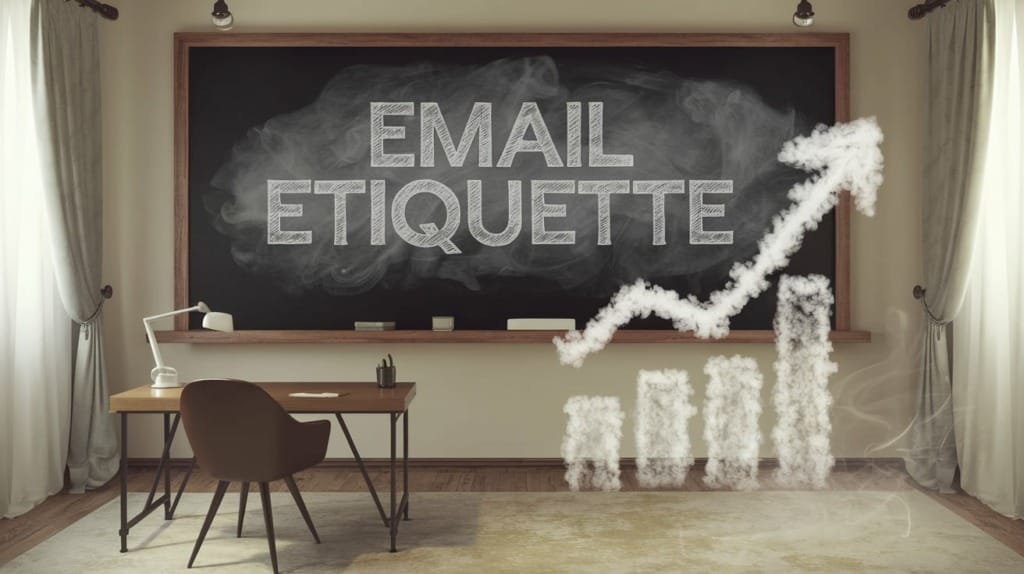
End with a Courteous Sign-Off
You crafted an attention-grabbing subject line. Wrote a compelling, concise email body. And proofread every word. Don’t neglect the importance of closing your email professionally.
A proper sign-off completes the message politely and tidily, adding an extra touch of finesse.
Here are some tips on wrapping up your email elegantly:
Know When To Use “Best” vs “Sincerely” vs “Thanks”
There are no hard rules, but some traditional guidelines on closing salutation:
Use “Best” for close contacts and informal correspondence.
Reserve “Sincerely” for formal requests or external recipients.
“Thanks” is warm and conversational if thanking them is appropriate.
Match the closing to the opening greeting tone. Like “Hi [Name]” and “Best, [Your Name]”.
Include Your Name and Contact Information
Always end emails by typing your full name so the recipient knows exactly who sent it.
It’s also helpful to include your phone number and/or email address below your name.
This allows the recipient to easily follow up if needed.
Be Consistent With Your Email Signature
Craft a professional email signature with your name, title, company, and contact info.
Use this signature consistently for all professional emails so recipients can easily reach you.
Just avoid over-designing with flashy fonts, unrelated quotes, etc. Simple is best.
Sign-Off With Your Official Title
Including your title, like Marketing Manager, after your name adds credibility and authority. This is particularly important when emailing externally.
But only do so if you are authorized to use that official company title.
Add Next Steps If Applicable
If required actions were outlined within the email, reiterate these as a courtesy:
“Please advise by Friday if you approve this proposal. Best, [Your Name]”
Extend Appreciation When Relevant
If someone went out of their way to provide information or assist you, express gratitude:
“Thank you again for your assistance with solving this issue. Sincerely, [Your Name]”
Avoid Overused, Insincere Closings
Canned phrases like “Cordially” or “Yours truly” come across as impersonal, outdated, and even dishonest if untrue.
You don’t have to get overly effusive with praise either. Keep it professional.
If No Response Needed, Say So
On FYI-only emails where no reply is expected, make that explicit:
“No need to respond to this message. Just wanted to update you on…”
This prevents an unnecessary back-and-forth.
Proofread Your Sign-Off Too!
Just like the email itself, double check your salutation and signature for typos before sending.
An email littered with mistakes undermines an elegant, thoughtful sign-off.
End as strong as you started with a polite, professional sign-off. This might seem small, but it makes a big difference in how recipients perceive your communication skills.
How to Tactfully Follow Up
You crafted a great email and hit send, expecting an important response. But after a couple days pass with radio silence, what is your best move?
Following up is key, but takes finesse. Here are professional tips on nudging recipients while preserving the relationship:
Follow Up After 2 Days of No Reply
Don’t let your emails get lost or forgotten in an overflowing inbox. If it’s time-sensitive, follow up within 2 business days.
But avoid badgering with constant “Checking in!” emails before giving them reasonable time to respond.
Briefly Re-state Your Initial Request or Question
Refresh their memory on your original email by briefly summarizing the key question or request:
“Checking back on my Tuesday email below regarding the proposal for Project X. Let me know if you need any clarification or have an update on expected timing.”
If Delayed Response, Don’t Over-Apologize
We all get behind on emails. Responding with excessive apologies for a late reply makes you seem unprofessional vs. acknowledging the delay tactfully:
“Thanks for your patience. My reply took longer than intended due to a high workload this week.”
Pick Up The Phone If It’s Mission Critical
For truly urgent matters, don’t spam someone’s inbox with 10 follow-up emails. It’s more effective to politely call:
“Hi Jane, since this order confirmation is time sensitive, I wanted to call and make sure you received the email I sent this morning with the docs needed by 5pm.”
Offer To Resend If Original Email Got Overlooked
Rather than assuming they are purposely ignoring you, your email may have legitimately been missed in the shuffle. Offer to resend as a courtesy:
“I wanted to check if you received the email below with the agenda items for tomorrow’s Board meeting. If not I’m happy to resend – just let me know!”
Take Silence As a Potential Response
If no reply after multiple polite nudges, take the hint that your request may not be feasible or a priority right now.
Don’t become a pest by demanding a response. Politely withdraw and try contacts who may be more receptive.
When Following Up, Strike the Right Tone
Avoid sounding overly passive or aggressive in your persistence.
Polite confidence with understanding for busy colleagues is ideal:
“Just wanted to touch base again on the proposal I sent last week. Please let me know your thoughts when you get a chance!”
Proper email follow up etiquette ensures your messages aren’t overlooked while maintaining positive work relationships.
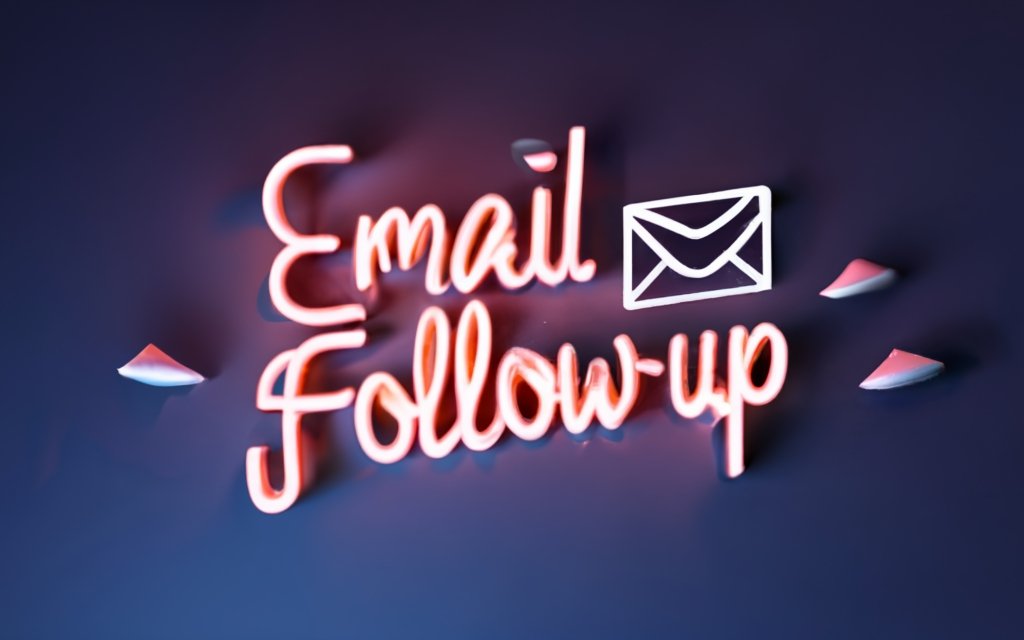
Email Etiquette Dos and Don’ts
Mastering proper email decorum requires knowing both what TO do to come across as professional as well as common blunders to avoid.
Follow these definitive dos and don’ts to level up your email game:
DO Personalize Mass Emails When Possible
Sending batch emails to a whole list at once is convenient. But taking the extra time to personalize and customize the messaging for each recipient makes a tremendous impact.
Even just mentioning their name in the greeting and subject line makes it feel special:
Subject: Nancy, I saw this and thought of you!
Hi Nancy,
I came across the attached industry report and immediately recalled our last conversation about trends in the space. Let me know if you find this study helpful!
Best,
Sandra
Little personalization touches demonstrate you care enough to individualize.
DON’T Overuse Exclamation Points!!!
In the absence of vocal tone and facial expressions, it’s tempting to rely on exclamation points to express enthusiasm or urgency in emails.
But overusing exclamation points often conveys the wrong tone, coming across as unprofessional, overly excited or even aggressive.
Use them sparingly, if at all, to avoid undermining your polished image.
DO Proofread Every Email Before Sending
Typos, grammar mistakes and autocorrect mishaps happen but undermine your credibility as a strong communicator.
Get in the habit of re-reading every email to check for errors before sending, regardless of recipient or urgency.
Slow down and self-edit even quick replies. It only takes a minute to prevent embarrassment.
DON’T Write Extremely Long or Wordy Emails
We all have a tendency to use extra words to sound professional. But incredibly long-winded emails are hard to digest for the reader.
Be concise. Craft focused, scannable emails that clearly convey key details with minimal fluff.
Get comfortable with brevity to deliver information efficiently.
DO Clearly Summarize Next Steps When Relevant
After sending requests or proposals over email, proactively circle back summarizing outcome.
Close the loop so expectations are crystal clear, like: “Just confirming you’re able to send the signed contract today, and I will proceed with Project X launch starting tomorrow. Thanks!”
Don’t leave things open to interpretation.
DON’T Reply All Unnecessarily
Hitting “Reply All” reflexively floods inboxes and is quite annoying. Before globally responding, consider whether your reply truly needs to be seen by EVERYONE.
Are you just answering the sender? Or providing info relevant only to a few key stakeholders on the thread? Reply individually instead.
DO Use a Professional Email Address and Signature
FirstName.LastName or FirstInitialLastName are safe choices for work email addresses.
And create a simple signature including your name, title, company and contact info.
This instantly communicates professionalism and makes you easily reachable.
Avoid overly personal or humorous email addresses and signatures.
DON’T Email Emotionally
Email lasts forever, so never vent anger or frustration in writing even if provoked.
If you need to express disappointment or correct someone’s mistake, do so with poise in a constructive manner when you have cooled down.
Channeling emotion into emails you can’t retract will only create more issues down the line.
Mastering email involves both using proper etiquette and avoiding common blunders. Keep these dos and don’ts in mind to continually refine your professional communication skills.
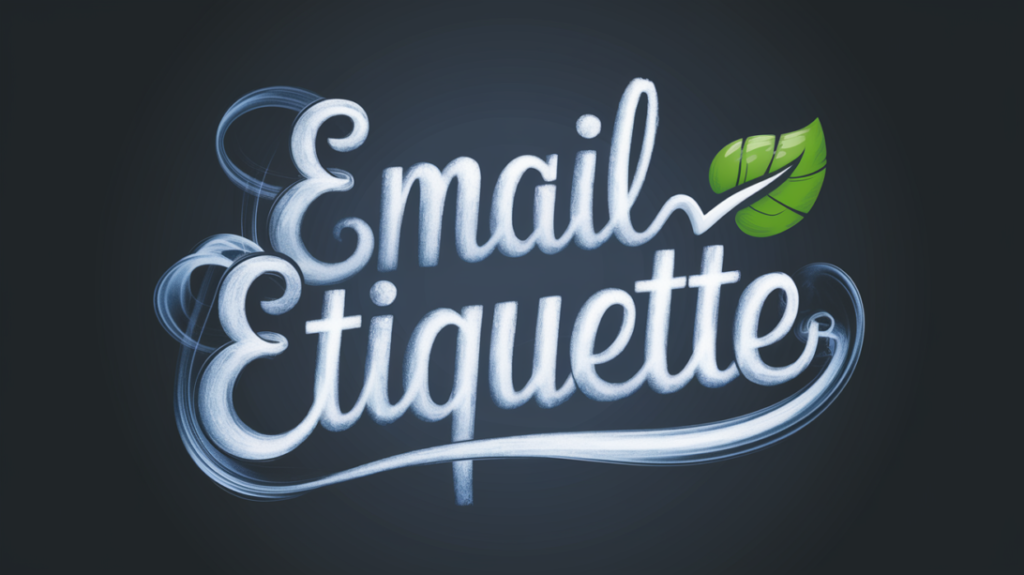
Emailing Multiple Higher-Ups?
When emailing up the chain of command to multiple executives or managers, extra care is required. You want to communicate information clearly without causing confusion.
Here’s how to email multiple bosses simultaneously with professional finesse:
Address Each Recipient Individually
Even when copy pasting your managers on a group email, address each separately in the greeting to show respect:
“Hi [Boss 1 Name],
Hi [Boss 2 Name]”
This avoids the informality of addressing them collectively like “Hi All” or “Hi Guys”.
Use Individual Emails For Truly Individual Matters
If you have a message specific to just one boss, send it in a separate email rather than grouping them to avoid confusion over who needs to take action.
Build in extra time to compose tailored emails addressing each higher up individually when appropriate.
CC Both When Appropriate For Situational Awareness
If the matter does legitimately involve both bosses, keep them looped in by CC’ing them rather than double emailing individually.
But only include executives that truly need to be kept in the know to avoid clogging inboxes.
BCC Higher Ups If Discretion Is Required
When emailing sensitive matters up the chain, use BCC to subtly inform management without exposing details to the wider team:
Email to: [Team Member Name]
BCC: [Manager Name], [Executive Name]
BCC will discreetly pass the message to leadership without worrying staff.
Let Bosses Resolve Any Disputes Between Themselves
If asked for an opinion or decision that concerns two managers with conflicting views or priorities, avoid picking sides.
Politely defer final judgement to their discretion, and allow them to work it out without putting yourself in the middle.
Don’t Over-Communicate in an Attempt to Keep Everyone Happy
Good intentions can backfire if you overload executives’ inboxes by over-emailing every minor update to keep all leaders perfectly looped in at all times.
Use good judgement on when higher level awareness is truly needed.
Proofread for Mistakes Doubly Carefully
Mistakes made emailing a single boss are amplified when accidentally sent to multiple VIPs.
Double check for typos and tone when emailing up the ladder to avoid unintended issues.
With thoughtfulness and professionalism, email communication to multiple higher ups can be clear, discrete and effective.
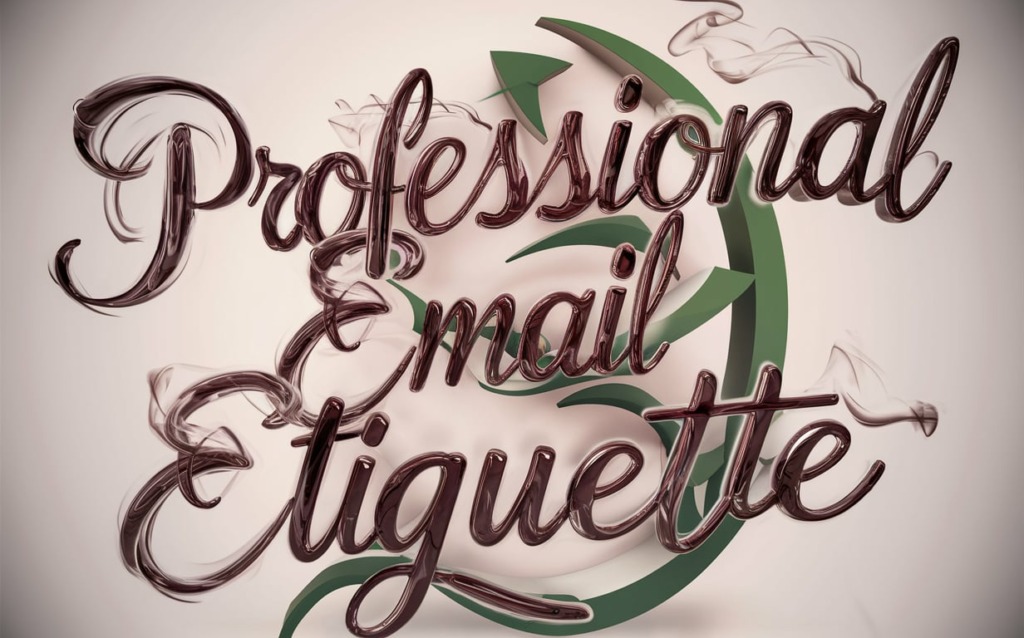
Replying All? Be Selective.
The “Reply All” button can be tempting, but should be used judiciously. Copying everyone on responses that don’t concern them can quickly become irritating or even risky.
Here are tips on keeping your reply-all emails relevant and professional:
Only Choose Reply All If Truly Relevant To All
Before reflexively including the whole email chain, pause and consider whether your reply legitimately needs to be seen by every single person.
Often, you really just need to respond directly to the sender or a small subset of key stakeholders only. No need to spam everyone unnecessarily.
Gets Annoying Fast When Overused
Reply-all overload is one of the fastest ways to annoy coworkers. The distraction of a flooded inbox floors productivity when people tune out.
Even if you personally don’t mind getting extra emails, recognize that not everyone feels the same. Tread carefully.
Easy Way To Inadvertently Share Private Information
Mistakenly replying all on an email thread containing private information between limited parties can cause major issues.
Double check when and where you are hitting reply all to avoid unintended oversharing or disclosure.
Can Derail Productive Discussion
Replying all with minor asides or questions can fragment what should be a focused discussion between the most relevant voices.
Allow conversations to flow naturally between active participants without pulling in tangents.
Don’t Respond Just To Get The Last Word
If a matter only concerns two colleagues but was accidentally sent as a group reply-all, don’t jump in just to insert yourself.
You aren’t contributing anything meaningful for the broader audience. Let the original parties sort it out directly.
Can Damage Professional Rapport
Over-replying to email threads in general can make you appear annoying, attention-seeking or inefficient with others’ time.
Even if your contributions feel valuable to you, recognize when a discussion is best continued offline.
When In Doubt, Reply to Sender Only
Unsure whether your response merits including the group? When in doubt, only reply back to the sender.
No one will be offended you didn’t loop in everyone. But they may be if you did unnecessarily.
Using judicious discretion with “Reply All” preserves professionalism. And your colleagues will thank you for it.
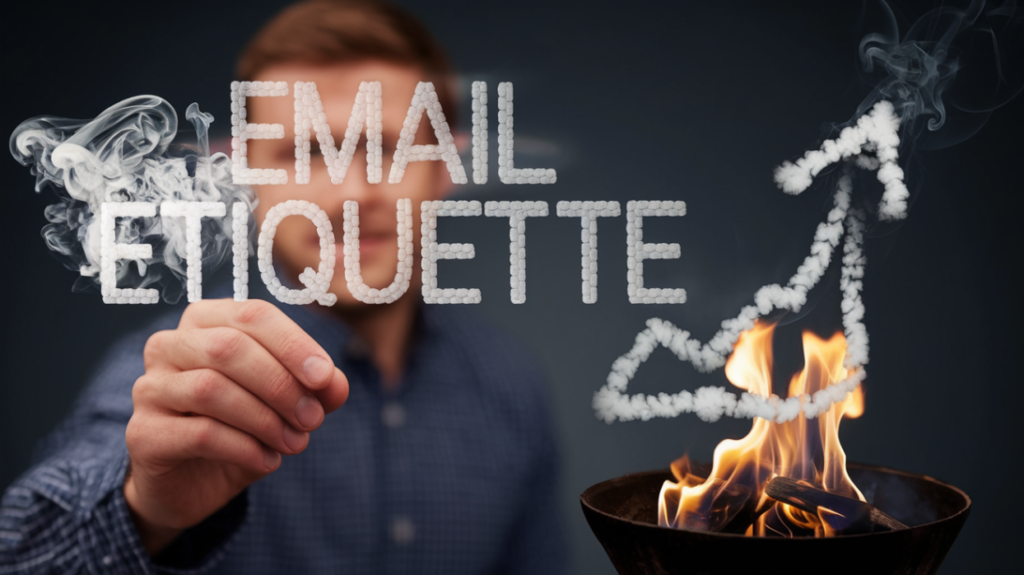
Key Takeaways on Mastering Professional Email Etiquette
Email is a critical communication tool for any professional. While it may seem straightforward on the surface, truly mastering email etiquette takes finesse.
By implementing best practices like concise, organized writing, proofreading, timely replies, and a courteous tone, you elevate your image and become more persuasive. Equally important is avoiding common pitfalls like verbosity, grammar errors, and overuse of Reply All.
With these etiquette guidelines, email can build relationships, convey authority, and enable you to accomplish objectives efficiently. Key lessons include:
- Grab attention with compelling subject lines using keywords and curiosity triggers.
- Warm yet professional greetings are key to setting tone. Match formality to recipient.
- Get to the point quickly in a focused, scannable email body.
- Proofread every message before sending, no matter how rushed. Catch errors.
- Sign off with your name, signature, appreciation, and clear next steps.
- Follow up tactfully if no reply, but avoid badgering colleagues.
- Personalize and segment emails when possible to show recipients you care.
- Reply all judiciously, only when each recipient truly needs your response.
By mastering these email best practices, you can communicate skillfully, build strong professional relationships, and make sure your messages are heard. With the tips provided throughout this guide, anyone can learn to email like a true boss.
Frequently Asked Questions
How long should a professional email be?
Aim to keep emails concise and scannable, with a length of 3-5 sentences optimal. Rarely should they exceed a paragraph or two.
When should I follow up on an unanswered email?
Follow up if you don’t receive a response after 2 business days. Send a brief email restating your request and asking if they received the original message.
How should I sign off an email to a manager?
Use “Best” or “Regards” for informal internal emails. “Sincerely” is better for formal external communications. Finish with your name and contact information.
Is it unprofessional to use emojis or exclamation points in work emails?
Use exclamation points sparingly, and avoid emojis in most professional correspondence. They can come across as too informal.
Should I put my job title in my email signature?
Yes, including your official title can add credibility. Just be sure you are authorized to use that specific job title within your company.
What’s the best way to email multiple people at once?
Address each recipient individually in the greeting. Use CC if sharing situational awareness, and BCC for confidential messages to discreetly inform without exposing details.
How can I make a good impression emailing people I don’t know well?
Use formal greetings like “Dear Mr. Smith”, avoid informal abbreviations, and don’t make assumptions about name spelling or preferences. Keep details professional.
What’s the ideal length for an email subject line?
Subject lines should be under 50 characters so they don’t get cut off on mobile. Shoot for brief but descriptive, around 6-10 words summarizing content.
How do I email a CEO or senior executive?
Use their full name and title in a formal greeting like “Dear Mr. Jones”. Get directly to your request in 1-2 sentences using polite, professional language.
Should I reply all to long email chains?
Only reply all if your response absolutely needs to be seen by each person copied. Otherwise, you risk annoying people with irrelevant messages flooding their inbox.

